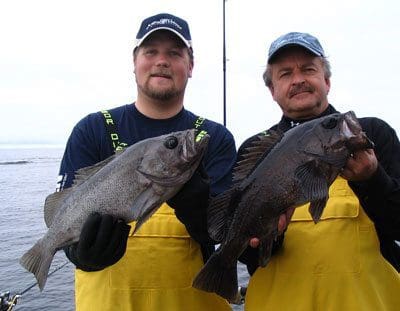Alaska Department of Fish and Game (ADFG) divides rockfish into two categories with separate regulations: pelagic rockfish and demersal shelf rockfish (DSR). Our anglers often ask what the terms mean.
Let’s start with pelagic. The term comes from the Greek pélagos, which means open sea. The zone of the ocean considered pelagic includes everything from the surface to just short of the bottom. The most common catches in the pelagic category are black, yellowtail, and dusky rockfish. The rockfish classified as pelagic in our regulations are more abundant and faster growing than DSR. Most are 7 to 30 years old while DSR range from 15 to at least 75 years old and are less abundant.
As for behavior, the rockfish frequently ignore their designated category. We catch pelagic rockfish on the bottom and we encounter DSR hundreds of feet off bottom. Because rockfish of all types are relatively slow growing and late maturing and are easily overfished. Alaska’s regulations of one DSR and 3 pelagic rockfish per day may seem overly restraining given how the vast abundance of rockfish we encounter, but a conservative approach ensures rockfish for the future.
For an illustrated rundown of the most common rockfish in sport catches in Southeast Alaska go here.
Learn more about Pelagic Rockfish on our website here.

